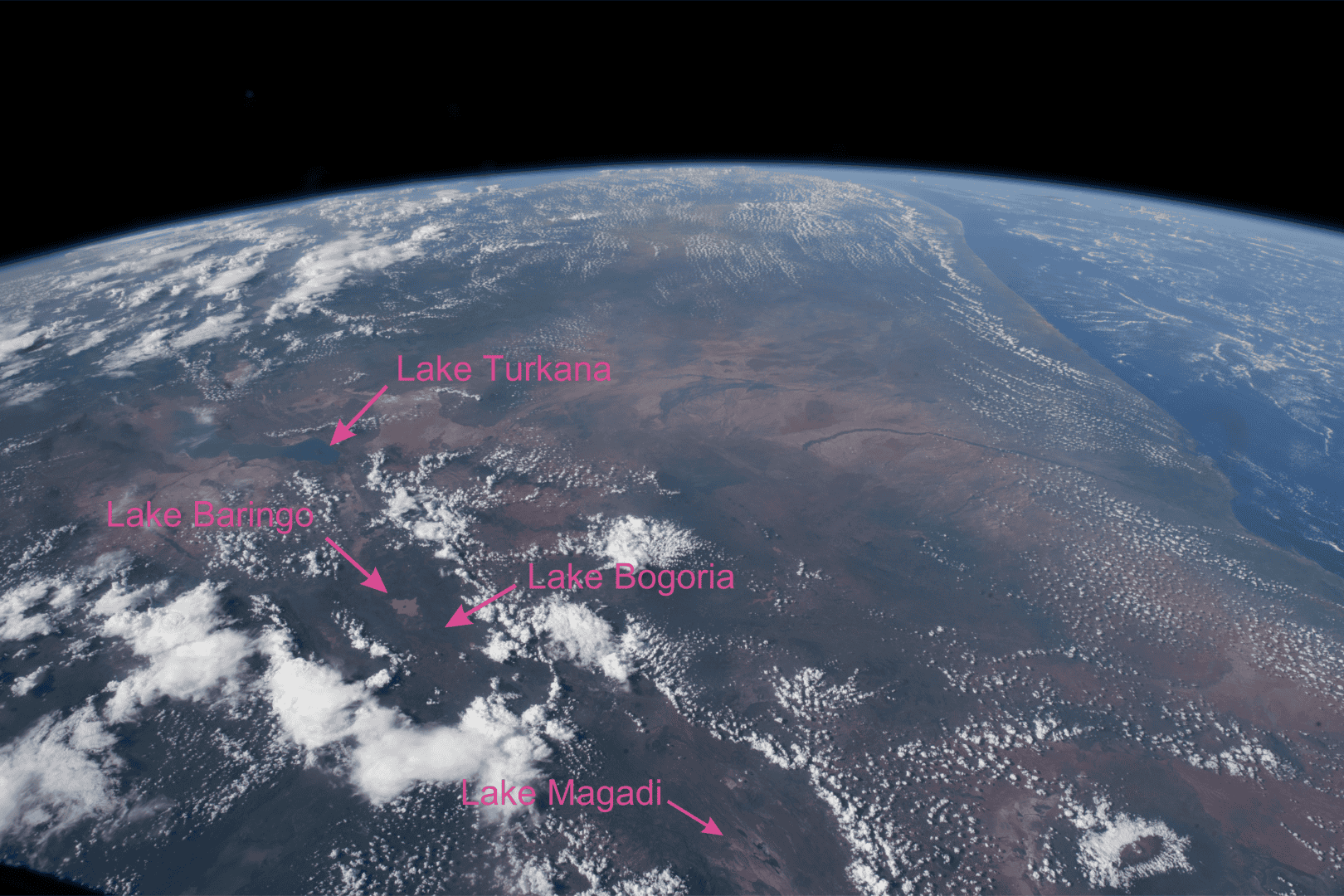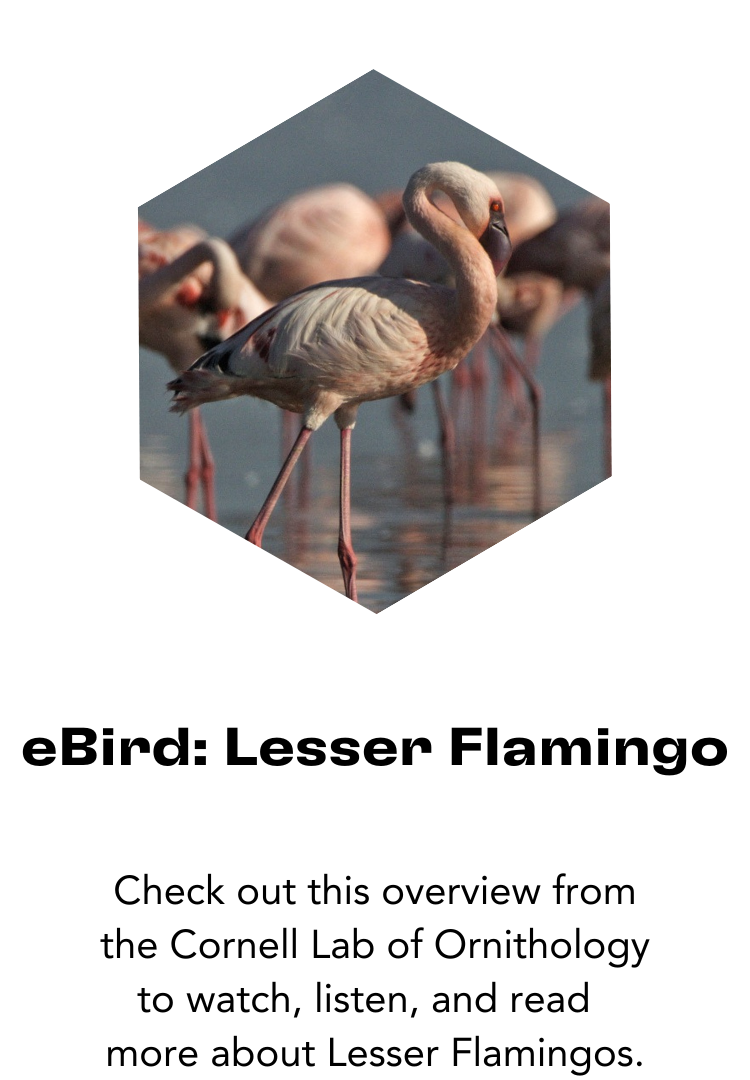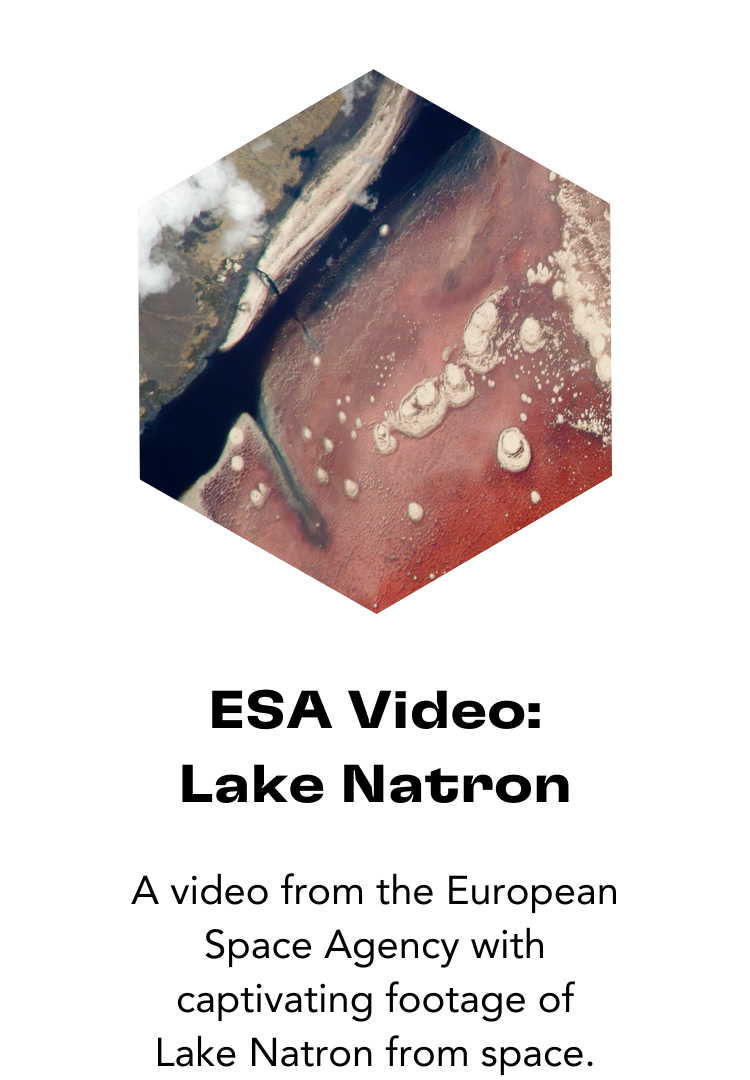
Oblique Lake Natron

Lake Natron is one of the most iconic lakes in the East African Rift Valley. The bright corals and crimson hues of the lake are visible from space, air, and ground. Flamingos get their unique pink plumage from Lake Natron and similar lakes because they are full of their primary food source; cyanobacteria. Cyanobacteria contain pigments called carotenoids that give a red or pink colour to animals who eat it – and to Lake Natron. Carotenoids are also what gives cardinals their red plumage!
Lesser Flamingos are uniquely adapted to thrive in extremely saline, alkaline lakes that reach very high temperatures like Lake Natron, which is where ~75% of all Lesser Flamingos in the world are born. Thick skin on their legs and feet protects Lesser Flamingos from burns when wading in water as hot as 40°C / 104°F, caused by hot springs within the lake. If no fresh water is available, special glands in their bills filter out the high amounts of salt in the water. With all of these obstacles for other wildlife, Lesser Flamingos and the eggs laid during breeding and nesting season on the lake are mostly safe from predators.
Join Dr. Bondar on a ground visit to Lake Natron.
Threats to Lesser Flamingo are primarily human-caused and habitat-related, and increased pressure to begin soda ash extraction is a major concern. Soda ash (sodium carbonate) is a chemical compound that is used to create a range of products, including detergents and soaps, and there was recently proposed construction at Lake Natron that would have pumped water from the lake into an on-site processing plant where sodium carbonate would be extracted from the water. There is one main water source flowing into Lake Natron, Ewaso Ng’iro River, along with several hot springs, which means that removing water is extremely risky and could reduce the water levels so much that cyanobacteria are unable to grow, affecting Lesser Flamingo food sources.
The plan to build a soda ash factory dam was withdrawn by the Tanzanian government in 2018 after significant opposition from conservationists, but the pressure to develop remains a threat to Lesser Flamingo habitats across the Great Rift Valley region.
Since Lesser Flamingos are perfectly adapted to such unique conditions, they are not seasonal migrators that are pushed to migrate by changes in seasons, but instead are nomadic, and migrate between lakes in the East African Rift Valley only when the current environmental conditions are no longer suitable. As human development continues to intensify, these migrations are increasingly common. Many historically popular lakes are now seeing decreases in Lesser Flamingo populations as changes to their habitats become too drastic. Lake Natron is not yet formally protected, so continued monitoring of the developments in this area is critical.
A timelapse of images taken from the International Space Station, showing a trip across the East African Rift Valley (Earth Science and Remote Sensing Unit, NASA Johnson Space Center).
Below is a frame from the timelapse above. In it, we can see many of the important lakes in the Great Rift Valley, and visualize the journey of Lesser Flamingos when they migrate between habitats.

ISS069-E-13262, showing several of the lakes in the East African Rift Valley that are habitats for Lesser Flamingos (Earth Science and Remote Sensing Unit, NASA Johnson Space Center).
Explore more below to learn about Lesser Flamingos and their unique habitats like Lake Natron!



Sources
- IUCN: https://www.iucnredlist.org/species/22697369/129912906
- Cornell Lab of Ornithology: https://birdsoftheworld.org/bow/species/lesfla1/cur/introduction
- BirdLife International: http://datazone.birdlife.org/species/factsheet/lesser-flamingo-phoeniconaias-minor